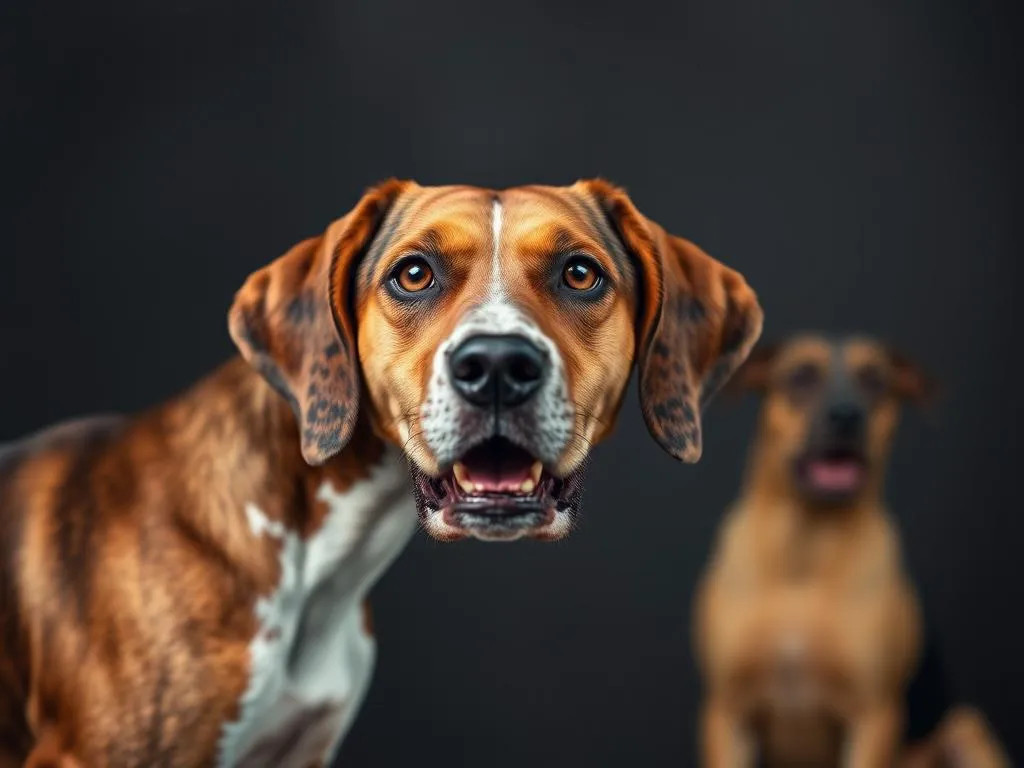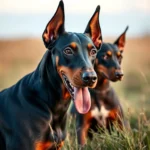
Introduction
Dog breeds represent the diverse varieties of domestic dogs, each with unique characteristics, behaviors, and purposes. Understanding different dog breeds is essential for potential dog owners, as it helps in finding the right match for their lifestyle and needs. Among these breeds, hound dog breeds hold a special place due to their historical roles as hunters, trackers, and loyal companions.
Hound dogs are distinguished by their keen senses and robust physical attributes, making them exceptional at tracking and hunting. They are divided into two primary categories: scent hounds, known for their exceptional smell, and sight hounds, recognized for their speed and agility. This article aims to provide an in-depth overview of hound dog breeds, their traits, types, and suitability for various roles.
Understanding Hound Dog Breeds
What Are Hound Dogs?
Hound dogs are a group of breeds that have been bred primarily for hunting purposes. Historically, these dogs were used for tracking game, both on land and in water. The classification of hounds typically includes scent hounds and sight hounds, each serving a distinct purpose in hunting scenarios.
Scent hounds rely on their extraordinary olfactory senses to track scents over vast distances, while sight hounds hunt primarily by sight and speed. This division highlights the unique capabilities that each group possesses, making them valuable in various roles beyond hunting.
Common Characteristics of Hound Dog Breeds
Hound dog breeds share several common characteristics that set them apart from other dog classifications:
-
Physical Traits: Hounds come in various sizes, from the small Beagle to the large Bloodhound. Their coat types also vary widely, with some having short, smooth coats while others possess long, flowing fur. Color variations are common, including solid colors, spots, and brindles.
-
Temperament and Behavior: Generally, hound dogs are known for their independence and strong instincts. While they can be loyal and affectionate companions, they often have a mind of their own, which can be both a blessing and a challenge for owners. Their energy levels can vary significantly, with some needing ample exercise and others being more laid-back.
-
Specific Abilities: Hound breeds are renowned for their unique abilities. Scent hounds excel in scent tracking, capable of following trails that are days old, while sight hounds can reach incredible speeds, making them adept at chasing prey.
Types of Hound Dog Breeds
Scent Hounds
Definition and Key Characteristics
Scent hounds are designed for tracking and hunting by following scents. They possess an acute sense of smell, which allows them to detect and follow trails left by animals.
Popular Scent Hound Breeds
- Beagle
- Overview: Beagles are friendly, curious, and great with families. They are small to medium-sized dogs with a keen sense of smell.
- Temperament: Known for their playful and affectionate nature, Beagles are sociable and get along well with children and other pets.
-
Care Needs: Regular exercise is essential to prevent boredom, and they require a balanced diet to maintain their health.
-
Bloodhound
- Overview: Bloodhounds are large dogs famous for their tracking abilities, often used in search and rescue operations.
- Temperament: They are gentle, affectionate, and good with children, but they can be stubborn at times.
-
Care Needs: Bloodhounds need regular exercise and mental stimulation to keep them engaged.
-
Basset Hound
- Overview: Basset Hounds are known for their droopy ears and sad expressions. They have excellent tracking abilities.
- Temperament: These dogs are laid-back, friendly, and affectionate, making them great companions.
- Care Needs: They require moderate exercise and regular grooming due to their loose skin.
Sight Hounds
Definition and Key Characteristics
Sight hounds are known for their incredible speed and agility. They rely on their keen eyesight to pursue prey, often covering large distances quickly.
Popular Sight Hound Breeds
- Greyhound
- Overview: Greyhounds are one of the fastest dog breeds, originally bred for racing and hunting.
- Temperament: They are gentle and affectionate, known for being couch potatoes despite their athleticism.
-
Care Needs: Greyhounds require regular exercise but also enjoy lounging around. They need a comfortable bed and a balanced diet.
-
Whippet
- Overview: Whippets are similar to Greyhounds but smaller in size. They are agile and fast, making them excellent runners.
- Temperament: These dogs are friendly, affectionate, and good with children. They thrive on companionship.
-
Care Needs: Regular exercise is crucial, but they also enjoy relaxing at home. They have a short coat that requires minimal grooming.
-
Afghan Hound
- Overview: Afghan Hounds are known for their long, flowing coats and unique appearance. They have a regal demeanor and are quite independent.
- Temperament: They are playful but can be aloof with strangers, requiring socialization early on.
- Care Needs: Regular grooming is essential to maintain their beautiful coat, along with daily exercise.
Other Hound Breeds
Mixed Hound Breeds
Mixed hound breeds often inherit desirable traits from their hound ancestry. They can vary widely in appearance and temperament, making them unique companions. Examples include the Coonhound, a mix of various hound breeds, known for its versatility in hunting.
Hound Breeds with Unique Traits
- Plott Hound
- Overview: The Plott Hound is known for its hunting prowess, particularly in tracking large game like bears.
- Temperament: They are loyal, intelligent, and require consistent training and socialization.
-
Care Needs: Plott Hounds need ample exercise and a diet suited for active dogs.
-
American Foxhound
- Overview: American Foxhounds are known for their endurance and versatility, often used in hunting.
- Temperament: They are friendly, social, and good with children, requiring companionship.
- Care Needs: Regular exercise is essential, along with a balanced diet to keep them healthy.
Hound Dog Breeds in Different Roles
Hound Dogs as Companions
Owning a hound dog breed can be incredibly rewarding. These dogs often form strong bonds with their families and are known for their loyalty. They thrive in environments where they can receive proper exercise and mental stimulation.
Hound dogs can fit well into various family dynamics. Their friendly nature makes them suitable for homes with children, while their independent streak can be ideal for individuals who appreciate a dog that can entertain itself. However, prospective owners should consider the hound’s exercise needs and ensure they can meet these demands.
Hound Dogs in Hunting and Tracking
Hound dog breeds play a crucial role in hunting and tracking. Their keen senses and specialized abilities make them indispensable to hunters. Training is essential for these roles, as it helps hone their natural instincts.
Scent hounds are particularly valuable in tracking down game, while sight hounds excel in the chase. Their training often includes scent recognition, obedience, and socialization to ensure they can work effectively in the field.
Hound Dogs in Search and Rescue
The role of scent hounds in search and rescue operations cannot be overstated. Their extraordinary sense of smell allows them to locate missing persons, making them invaluable in emergency situations. Bloodhounds, in particular, are renowned for their tracking abilities, often used by law enforcement to find lost individuals.
One notable case involved a Bloodhound named “Buster,” who successfully tracked a missing child through dense woods, demonstrating the incredible capabilities of hound dog breeds in search and rescue missions.
Care and Maintenance of Hound Dogs
General Care Guidelines
Caring for hound dog breeds requires attention to their unique needs. Nutrition plays a crucial role in maintaining their health. Feeding a high-quality, balanced diet tailored to their specific age, size, and energy requirements is vital.
Regular exercise is equally important. Most hound breeds require daily walks and playtime to burn off energy and prevent behavioral issues. Engaging them in activities like fetch or agility training can also provide mental stimulation.
Grooming Needs
Grooming requirements vary among hound breeds. Short-haired breeds like Beagles and Greyhounds require minimal grooming, while long-haired breeds like Afghan Hounds need regular brushing to avoid matting. Bathing should be done as necessary, depending on the dog’s activity level and coat condition.
Health Considerations
Like all dog breeds, hound dog breeds can be prone to specific health issues. Common concerns include hip dysplasia, ear infections (especially in breeds with floppy ears), and obesity. Regular veterinary check-ups are essential for early detection and prevention of health problems.
Choosing the Right Hound Dog Breed
Assessing Compatibility with Lifestyle
Before choosing a hound dog, it’s important to assess compatibility with your lifestyle. Factors such as living space, time available for exercise, and family dynamics should be considered. Some hounds thrive in active households, while others may be more suited to quieter environments.
Adoption vs. Buying
Deciding between adopting a hound dog or purchasing one from a breeder is another crucial consideration. Adoption can provide a loving home to a dog in need, while reputable breeders can offer specific traits and health guarantees. Each option has its pros and cons, and researching local shelters and breeders is essential to make an informed decision.
Conclusion
In summary, understanding hound dog breeds is key to appreciating their unique traits and roles in society. From their remarkable tracking abilities to their affectionate nature as companions, hounds offer a diverse range of characteristics that can fit various lifestyles.
Whether you’re looking for a loyal companion, an active hunting partner, or a capable search and rescue dog, hound breeds provide exceptional options. Responsible ownership, including proper care, training, and socialization, is essential to ensure a happy and healthy life for these remarkable dogs.









